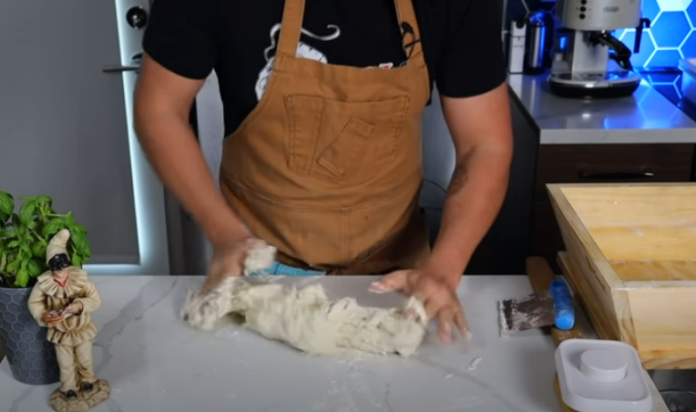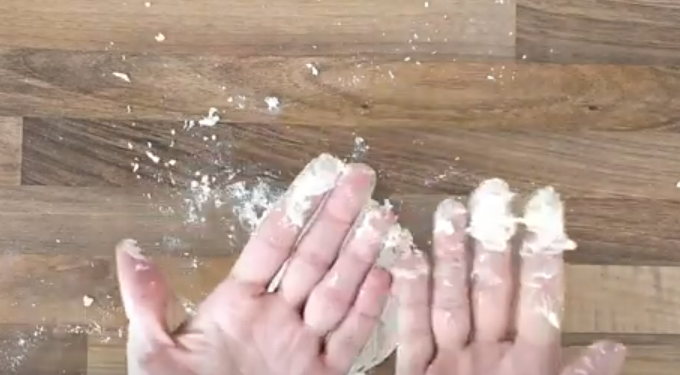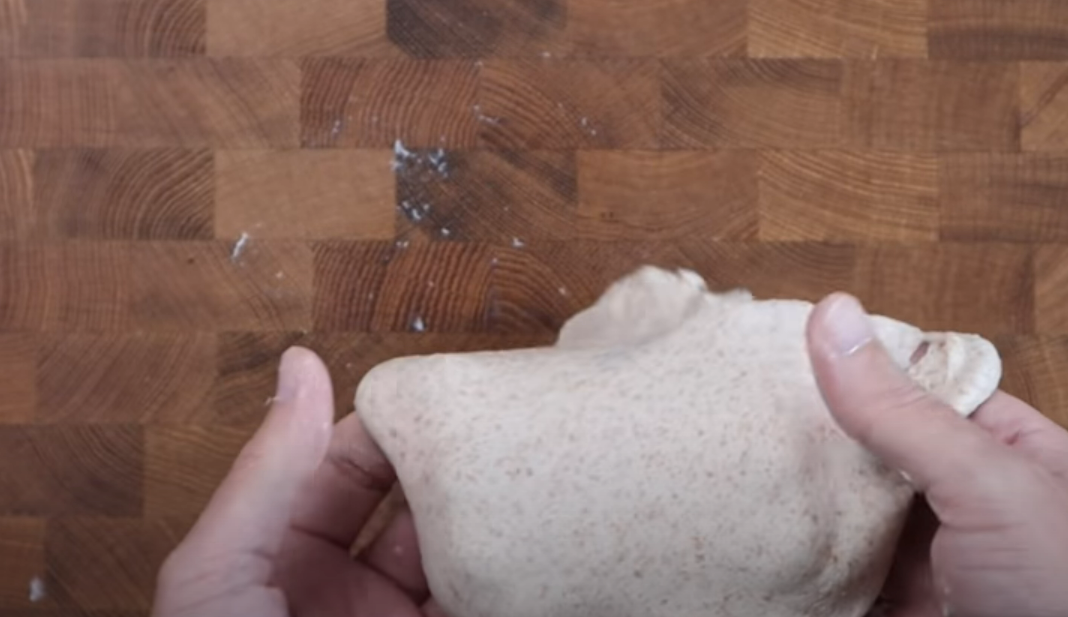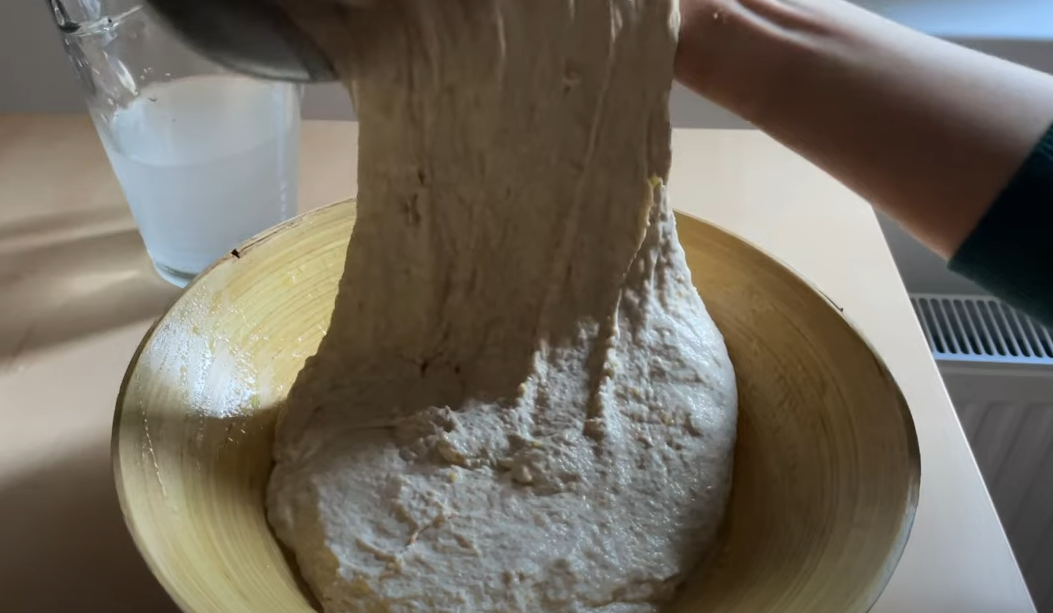To make pizza dough less sticky, add more flour or knead it longer until it becomes smooth and elastic. When making adjustments, do so gradually to achieve the desired consistency.
Creating the perfect pizza dough is essential for a delicious homemade pie. Finding the right balance of ingredients and texture can make or break your pizza-making experience. If you’re struggling with sticky dough, don’t worry; there are simple solutions to improve its texture.
Following a few tips and techniques, you can transform your sticky dough into a workable and delicious base for your favorite toppings. Let’s explore effective ways to make your pizza dough less sticky and enhance your culinary skills.
Why Sticky Pizza Dough Occurs
Understanding why sticky pizza dough occurs is crucial in mastering the art of pizza making. Sticky pizza dough often results from overhydration, insufficient kneading, or too warm dough.
Overhydration
Excess water can cause sticky dough; ensure water is added gradually to reach the right consistency.
Insufficient Kneading
Proper kneading develops the gluten in the dough, preventing stickiness; Knead until elastic.
Too Warm Dough
Warm temperatures can make the dough sticky; refrigerate or let it rest to cool down before shaping.
The Source: Why is My Pizza Dough Shrinking
Tips To Make Pizza Dough Less Sticky
Looking to make your pizza dough less sticky? Here are some tips to help you out! Adjust the hydration level, add flour gradually, mix the dough thoroughly, use oil or butter to minimize sticking, and chill the dough before shaping.
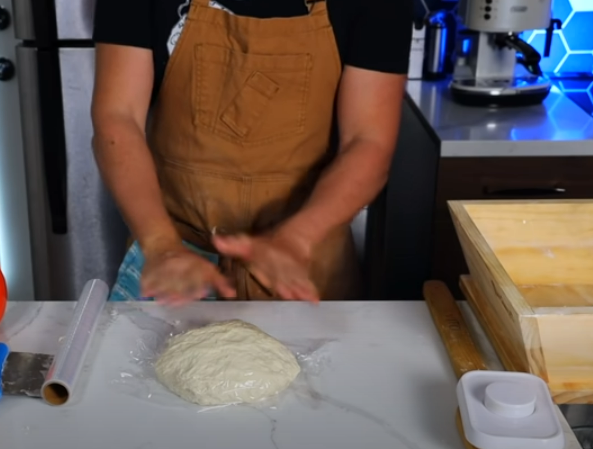
Adjusting Flour-water Ratio
- One way to make pizza dough less sticky is by adjusting the flour-to-water ratio.
Increasing Kneading Time
- Increasing kneading time helps develop gluten, making the dough less sticky.
Adding Flour Gradually
- Adding flour gradually ensures better dough consistency and reduces stickiness.
Chilling The Dough
- Chilling the dough before working with it can reduce stickiness and make it easier to handle.
Using Oil Or Dusting Agent
- Using oil or a dusting agent on hands and work surfaces can prevent sticking.
Common Mistakes To Avoid
Common Mistakes to Avoid:
When it comes to making pizza dough, achieving the perfect consistency is crucial. One of the most common challenges is dealing with sticky dough. While some stickiness is normal, excessively sticky dough can make it difficult to work with and result in a less-than-ideal texture. To help you overcome this hurdle, we’ve outlined the common mistakes to avoid when making pizza dough.
Adding Too Much Flour:
While it may be tempting to add more flour to combat stickiness, this can do more harm than good. Adding too much flour disrupts the balance of ingredients and can make the dough overly dry and tough. It’s important to remember that pizza dough is meant to be slightly sticky, as this helps create a light and airy crust. Instead of adding more flour, try using the fold-and-roll technique to stretch and develop gluten, which will help reduce stickiness without compromising the dough’s texture.
Overproofing the dough:
Overproofing occurs when the dough is allowed to rise for too long, resulting in a sticky and overly elastic texture. Yeast consumes the sugars in the dough, releasing carbon dioxide, and if left to proof for too long, the gluten in the dough becomes overextended. To avoid this, ensure you follow the recommended proofing times stated in the recipe. Generally, when the dough has doubled in size, it is ready to be shaped. By monitoring the proofing process closely, you can prevent your pizza dough from becoming excessively sticky.
Additional Techniques To Reduce Stickiness
Making pizza dough at home c;n be a sticky affair, but fear not, there are additional techniques you can employ to reduce the stickiness of your dough. By utilizing these methods, you can achieve the perfect texture for your pizza crust. Let’s explore these additional techniques to reduce stickiness.
Using A Stand Mixer Or Food Processor
Utilizing a stand mixer or food processor can be a game changer when it comes to reducing stickiness in pizza dough. The consistent and thorough mixing action helps the gluten develop properly, resulting in a smoother and less sticky dough.
Using High-gluten Flour
High-gluten flour is a fantastic option for reducing stickiness in pizza dough. Its higher protein content promotes better gluten formation, leading to a less sticky and more elastic dough texture.
Using A Wet Dough Handling Technique
Applying a wet dough handling technique can work wonders in reducing stickiness. Keep your hands and work surface slightly wet while kneading the dough. This method prevents the dough from sticking excessively, resulting in a smoother texture.
Working With Cold Ingredients
Working with cold ingredients, such as cold water or even refrigerating the dough, can help reduce stickiness. Cold temperatures inhibit gluten development, leading to a firmer and less sticky dough.
Using A Dough Scraper
Employing a dough scraper makes the dough-handling process much easier. It allows you to manipulate the dough without excessive sticking, ensuring a smoother and less sticky texture for your pizza dough.
Troubleshooting If Dough Remains Sticky
When making pizza dough, it can be frustrating if the dough remains sticky even after following the recipe. There are a few troubleshooting methods you can try to make the dough less sticky, allowing you to work with it more easily.
Resting The Dough
After kneading 10–15e dough, allow it to rest for 10-15 minutes. This gives the gluten in the dough a chance to relax, which can make it easier to work with. Patience is key in this step, as it can make a noticeable difference in the dough’s stickiness.
Adding More Flour
If the dough remains sticky after resting, sprinkle a small amount of flour onto the surface and knead it in. Repeat this process until the dough becomes less sticky and more manageable. Be cautious not to add too much flour, as it can affect the texture of the final crust.
Adjusting The Hydration Level
If the dough is still sticky, you may need to adjust the hydration level. Start by adding a small amount of flour and continue kneading until the liquid is absorbed. Finding the right balance between flour and water will help achieve the desired dough consistency.
By using these troubleshooting methods, you can overcome sticky pizza dough and achieve the perfect texture for your homemade pizza crust. With a little patience and adjustment, you can ensure a flour-coated, easy-to-work-with dough every time.
The Source: How to Soften Pizza Dough
Frequently Asked Questions Of How To Make Pizza Dough Less Sticky
How Can I Make Pizza Dough Less Sticky?
To make pizza dough less sticky, you can try adding a bit more flour or olive oil until the dough is normal.
sticky. Is it normal for pizza dough to be sticky?
Yes, it’s normal for pizza dough to be slightly sticky, but if it’s excessively sticky, you may need to adjust the flour or liquid in the recipe.
Should I use flour or oil to reduce stickiness?
Either method can work. You can lightly flour your hands or work surface, or use a small amount of olive oil to reduce stickiness.
What Role Does Humidity Play in Dough Stickiness?
Humidity can impact the stickiness of pizza dough. In humid conditions, you may need to use less liquid or more flour to adjust the consistency.
How Should I Knead the Dough to Reduce Stickiness?
Kneading the dough for around 8–10 minutes can help develop the gluten and reduce stickiness, resulting in a smoother texture.
Conclusion
To sum up, achieving the perfect pizza dough consistency can be a game-changer for any budding pizzaiolo. By following the tips mentioned in this blog post, you can successfully eliminate stickiness and create a dough that is easy to work with.
Remember to adjust the hydration levels, incorporate the ingredients properly, and be patient during the proofing process. With practice and experimentation, you’ll be able to master the art of making non-sticky pizza dough. Happy pizza making!

